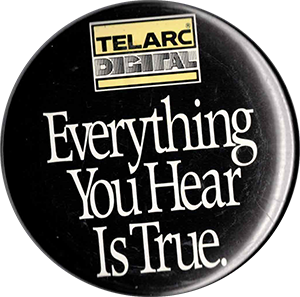The Right Place: Why Cleveland?
Cleveland has long suffered from a reputation problem.1 Those who know the city, though, appreciate its vibrant arts scene, low cost of living, and diverse neighborhoods. What made Cleveland such a good place for Telarc?
The first answer to this question is The Cleveland Orchestra. Considered one of the world’s top symphony orchestras since shortly after its founding in 1918, the orchestra’s musicians form the nucleus of a large classical music community in northeast Ohio.2 There are at least seven professional orchestras within driving distance of Cleveland, allowing some musicians to make a living in what they refer to as “the Orchestra of the Interstate.”3 Music-presenting organizations also abound, and the Cleveland Orchestra’s members teach aspiring musicians at the Cleveland Institute of Music, the Cleveland Music School Settlement, and elsewhere. Writer James Badal sums it up: “The whole picture could change quickly, for the world of the recording business continues to be a volatile arena, especially in the classics where costs routinely soar and sales cannot be counted on to dutifully follow. For now, at any rate, Cleveland is king.”4
There’s just no reason to be anywhere else.
Jack Renner, Telarc
Historian Susan Schmidt Horning conducted her doctoral thesis research in part on the Cleveland recording studio scene. In her book, Chasing Sound: Technology, Culture, & the Art of Studio Recording from Edison to the LP, she writes about the numerous labels which originated in Cleveland (in addition to Telarc, there have been Boddie Recording Company, Cleveland International Records, Delta International, Azica Records, and others).5 A user-maintained list of Cleveland-area record labels on Discogs.com has 771 entries. Cleveland was also home to innovators in the field of recording technology, including Brush Development Corp and Suma Recording’s chief engineer Kenneth Hamann.6 The Cleveland Institute of Music had one of the earliest classical recording engineer programs, and a similar program is still in operation at nearby Oberlin Conservatory.7
Further evidence of the strength of the Cleveland music scene is the Rock & Roll Hall of Fame, situated there in part due to Cleveland’s pioneering role in the development of Rock & Roll.8 A Cleveland Music tour could also include the Cleveland-style Polka Hall of Fame. Turning to the Grammy Awards, Cleveland has proven its mettle there as well. In addition to the many awards associated with Telarc, the Cleveland orchestra and its members have won several Grammys.9 Cleveland area natives Marc Cohn, Tracy Chapman, Marilyn Manson, and Phil Keaggy also fared well at the awards ceremonies. And no listing of Cleveland-based musicians is complete without mention of the winner of the first Best Polka Album Grammy, Frankie Yankovic, known as the Polka King.
Telarc’s Jack Renner gets the final word, from his 1996 interview with Susan Schmidt Horning:
Last updated on February 7th, 2025 at 01:06 am
- Cleveland native Jack Hanrahan may have started the tradition with his many Cleveland-based one-liners on Rowan and Martin’s Laugh-in. ↩︎
- The most recent of several books on the Cleveland Orchestra and its history and influence is Donald Rosenberg’s The Cleveland Orchestra Story: Second to None (Cleveland: Gray & Company, 2000). ↩︎
- The orchestras of Akron, Canton, Youngstown, Toledo, Erie PA, and the Cleveland Ballet and Opera often coordinate their rehearsal and concert schedules so they can utilize the same pool of musicians. ↩︎
- James Badal, Cleveland Edition, Sept. 1987. Quoted in Rosenberg, The Cleveland Orchestra Story, p. 508 ↩︎
- Delta International was billed by the Encyclopedia of Cleveland History as “Cleveland’s leading polka label.” Meaning, of course, that there were others! ↩︎
- Brush manufactured the first tape recorder which was designed and built in the United States. For more from Ken Hamann, listen to his interviews with historian Susan Schmidt Horning. ↩︎
- CIM’s program was founded by composer David Peele in 1982, and was led for many years by Tom Knab. Many of the program’s alumni (including the author) are currently working in the industry around the world. The program was shuttered following the passing of its then-Director Bruce Egre in 2020. ↩︎
- The term “rock and roll” was coined by Cleveland radio personality Alan Freed. ↩︎
- For more, check out this article on the Cleveland Orchestra’s Grammys. ↩︎
- Jack Renner, Interview with Susan Schmidt Horning, April 5, 1996. The full interview can be found here. ↩︎
